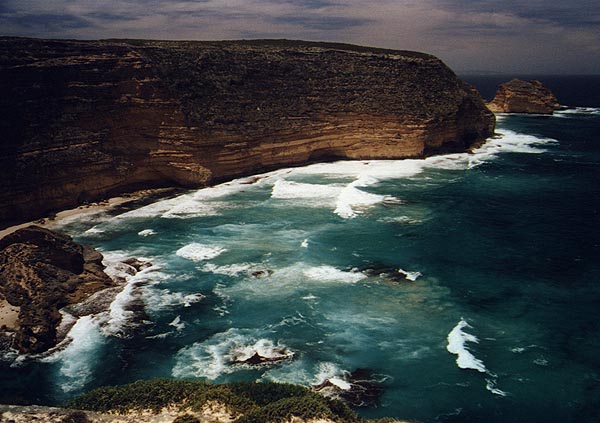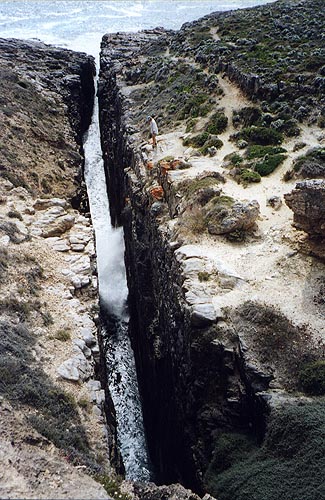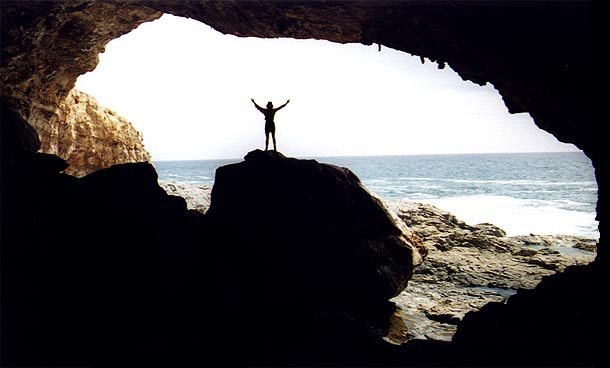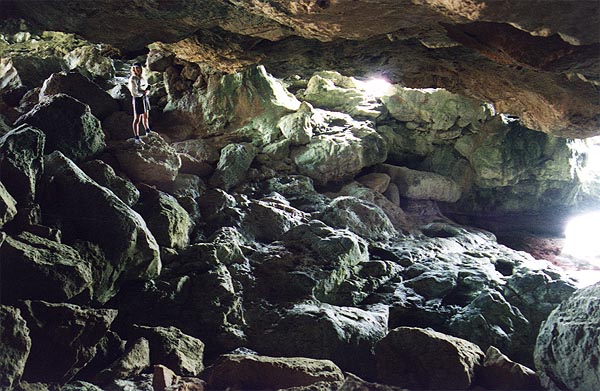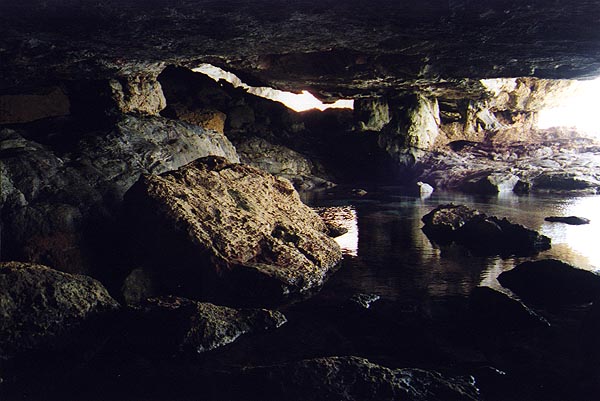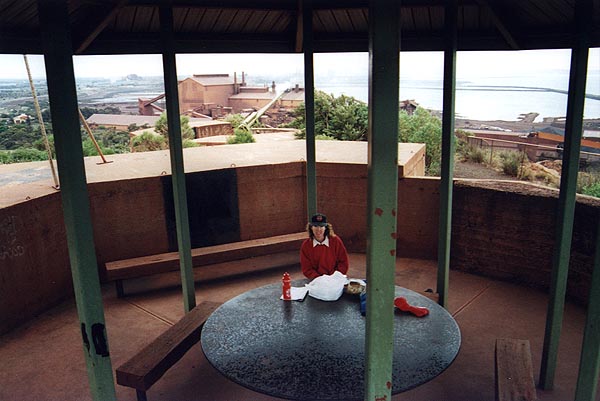Three Years on the Road
by
Brett Davis
103. Going Home
|
When I had come through Port Lincoln in 1975 I had visited a private "national park" called Whaler's Way, situated about forty kilometres south-west of the city. A brochure that Karen and I picked up showed that it was still going strong. I talked Karen into a visit, just for old time's sake. We paid a fifteen dollar entry fee and a three dollar key deposit prior to leaving town.
At Whaler's Way we drove through the boom gate and commenced our tour, visiting a number of places with imaginative names based around the Whaler theme. Whale Chaser Crevasse, Booby Gannet Crevasse, Humpback Whale Blowhole and Sperm Whale Cliff were okay, but not worth a photo, but some other spots were truly spectacular. At Cape Wiles we looked down on a close offshore island and a semi-detached sea-stack where dozens of fur seals gambolled in the water or basked and barked on shore. A little further around at Black's Lookout, the view of the cliffs of the Cape was amazing, even for cliffed-out people like us. Theakstone's Crevasse was worth the price of admission alone, a long narrow slice into the rock platform which apparently goes for another thirty metres under the ground as well. Cape Carnot was spectacular too, with spray rocketing skywards when the moderate swell hit the rocks of the cape.
All of these attractions pale into insignificance, however, when compared to another of Whaler's Way's features, a cave just to the north of Cape Carnot. A sign directed us to "Overhangs 300 metres, Cave 700 metres" and we obediently followed the track down to a ledge along the water's edge. We passed a couple of overhangs on our way along the coast, eventually reaching a large cave. I led out across a short, rocky traverse to the mouth of the cave but Karen baulked at the crossing.
Karen made her way gingerly over the rocks and into the cave to join me. We could not believe how beautiful it was. The roof was supported by three columns on one side and a single, larger column on the other. It angled down to a shallow pool, forming a kind of grotto before re-emerging into daylight on a rock shelf just above the waves. Light filtered into the cave and reflected off the water, subtly colouring everything in shades of green, blue and mauve. It was a magical place.
We drove back towards Port Lincoln and turned off to Lincoln National Park to camp for the night at Spalding Cove, but we did not have time for any walks and have no idea what the park is really like. Next morning, as we were leaving, a suicidal rabbit bolted out of the scrub at the side of the road and crash tackled one of our front wheels. That is one feral animal that the national park no longer has to worry about. We returned our Whaler's Way key and drove to a lookout above the town before heading up the eastern side of the Eyre Peninsula. Tumby Bay, Port Neil, Arno and Cowell all came and went. The overcast day turned into rain, consistent by the time we reached Whyalla. We lunched in a shelter atop Hummock Hill, overlooking the port, the town, and land in the distance across Spencer Gulf. Whyalla is a lot like Port Hedland - brown.
By nightfall we had reached Crystal Brook, just beyond Port Pirie. It was raining when we arrived, it rained all night, and it was still raining the next morning when we left, our tent saturated despite a futile effort to dry it out under a shelter prior to leaving.
A few hours after leaving Crystal Brook we arrived in Adelaide.I dropped Karen at the bus terminal, along with the bikes and all of our gear. I drove out to the Brits-Australia office near the airport, stopping along the way to clean up the camper and fill one tank with petrol. The inspection and paperwork at the office seemed to take forever, and I began to worry that I would not make it back into the city in time to catch the bus, so I phoned for a taxi. Eventually the camper was approved, the forms filled out and the deposits returned, everything being finalised just as the taxi arrived. I jumped in and soon arrived at the bus station with about half an hour to spare. |
